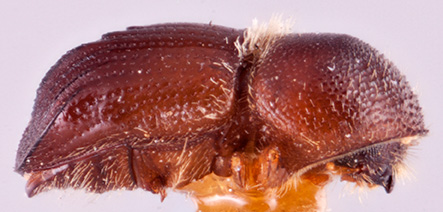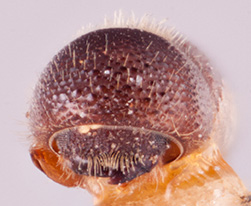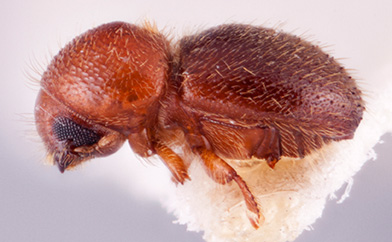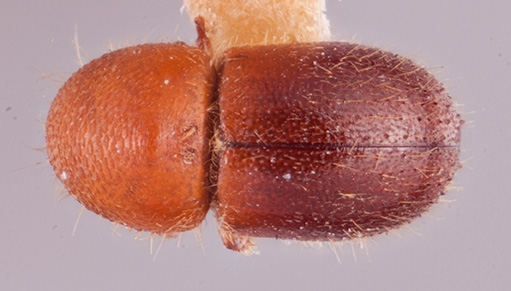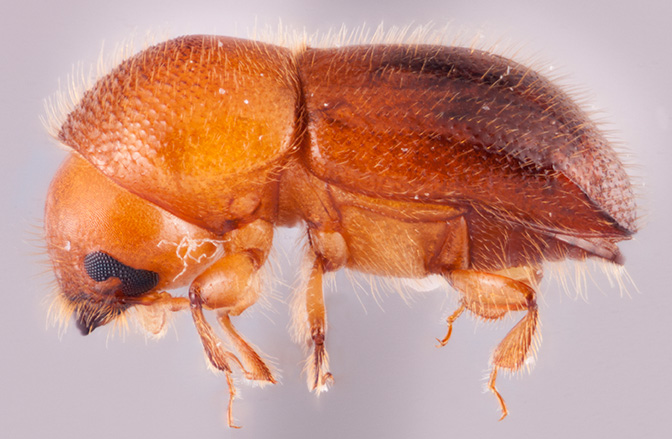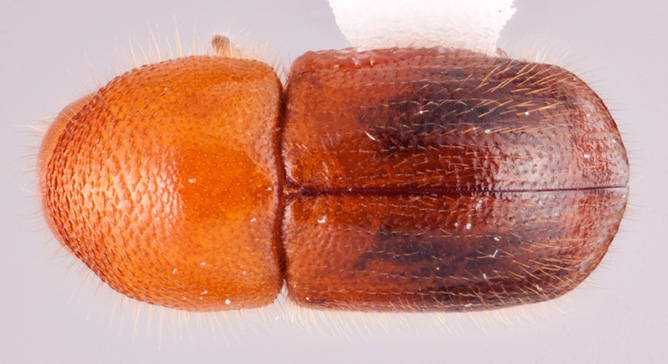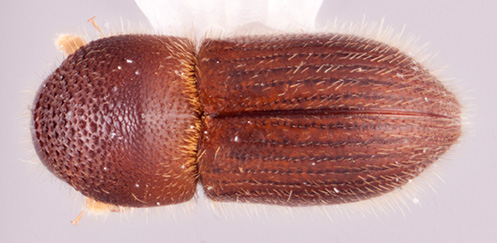Coptodryas
|
Coptodryas concinna; R.K. Osborn |
|
Coptodryas concinna; R.K. Osborn |
|
Coptodryas concinna; R.K. Osborn |
|
Coptodryas concinna; R.K. Osborn |
|
Coptodryas confusa; R.K. Osborn |
|
Coptodryas confusa; R.K. Osborn |
|
Coptodryas inornata; S.M. Smith |
|
Coptodryas inornata; S.M. Smith |
|
Coptodryas mus; R.K. Osborn |
|
Coptodryas mus; R.K. Osborn |
Taxonomy
Coptodryas Hopkins, 1915a: 54.
Diagnosis
1.8−4.0 mm long, 1.88−2.71 times as long as wide. Coptodryas can be distinguished by the scutellumscutellum:
a shield-like sclerotized plate located at the midpoint of the elytral base
not visible; dense tuft of setaeseta:
small hair-like or scale-like structure
present along elytralelytral:
pertaining to the elytra
basebase:
point or edge closest to the body; opposite of apex associated with an elytralelytral:
associated with an elytralelytral:
pertaining to the elytra
mycangium (C. confusa also has a pair of pit mycangiamycangia:
structures used to carry fungal symbionts; highly morphologically variable
 on the pronotalpronotal:
on the pronotalpronotal:
pertaining to the pronotum
discdisc:
the flat central upper surface of any body part (e.g. pronotum and elytra) ); elytralelytral:
); elytralelytral:
pertaining to the elytra
bases sinuate, costate; antennalantennal:
pertaining to the antennae
club flattened, types 3 or 4, sutures gently sinuate and pubescent on anterioranterior:
the front or forward; opposite of posterior face, three sutures visible on posteriorposterior:
face, three sutures visible on posteriorposterior:
toward the rear end; opposite of anterior
 face; pronotumpronotum:
face; pronotumpronotum:
the dorsal surface of the thorax
from laterallateral:
pertaining to the side
 view basic (type 0), or long and conical (type 5), rarely taller than basic (type 2; C. confusa); pronotumpronotum:
view basic (type 0), or long and conical (type 5), rarely taller than basic (type 2; C. confusa); pronotumpronotum:
the dorsal surface of the thorax
from dorsaldorsal:
of or relating to the upper surface; opposite of ventral
 view rounded (type 1) or basic and parallel sided (type 2), rarely conical (type 0; C. confusa); and anterioranterior:
view rounded (type 1) or basic and parallel sided (type 2), rarely conical (type 0; C. confusa); and anterioranterior:
the front or forward; opposite of posterior margin of pronotumpronotum:
margin of pronotumpronotum:
the dorsal surface of the thorax
with or without a row of 2−6 serrationsserration:
row of asperities; a saw-like structure  . In addition the procoxae contiguous, protibiaprotibia:
. In addition the procoxae contiguous, protibiaprotibia:
tibia of the first pair of legs
outer margin obliquely or distinctly triangular, armed by 6 or 7 denticlesdenticle:
a small tooth, the sides of which are equal and the tip is above the middle of the base , posteriorposterior:
, posteriorposterior:
toward the rear end; opposite of anterior
 face flattened, unarmed.
face flattened, unarmed.
May be confused with
Microperus and Schedlia
Distribution
Species are distributed in tropical Asia and are rare in Melanesia.
Gallery system
The gallery system in this genus appears to be rather variable (Browne 1961bBrowne 1961b:
Browne FG. 1961b. The biology of Malayan Scolytidae and Platypodidae. Malayan Forest Records 22: 1-255.). In C. bella (Sampson) and C. punctipenna (Schedl), an unbranched entrance tunnel leads to a single terminal brood chamber in the longitudinal plane. In C. confusa (Hopkins), the tunnels are simply branched and expanded in places to form small, irregular brood chambers in the longitudinal plane. In C. quadricostata (Schedl) and C. curvidente (Schedl), which usually breed in small diameter stems, there is a bifurcate or circumferential gallery in the transverse plane, and one or two longitudinal branches of very variable width in which the larvae develop (Browne 1961bBrowne 1961b:
Browne FG. 1961b. The biology of Malayan Scolytidae and Platypodidae. Malayan Forest Records 22: 1-255.).
Remarks
Coptodryas is paraphyletic with several species of Microperus. Further study is necessary to delimit both genera.

